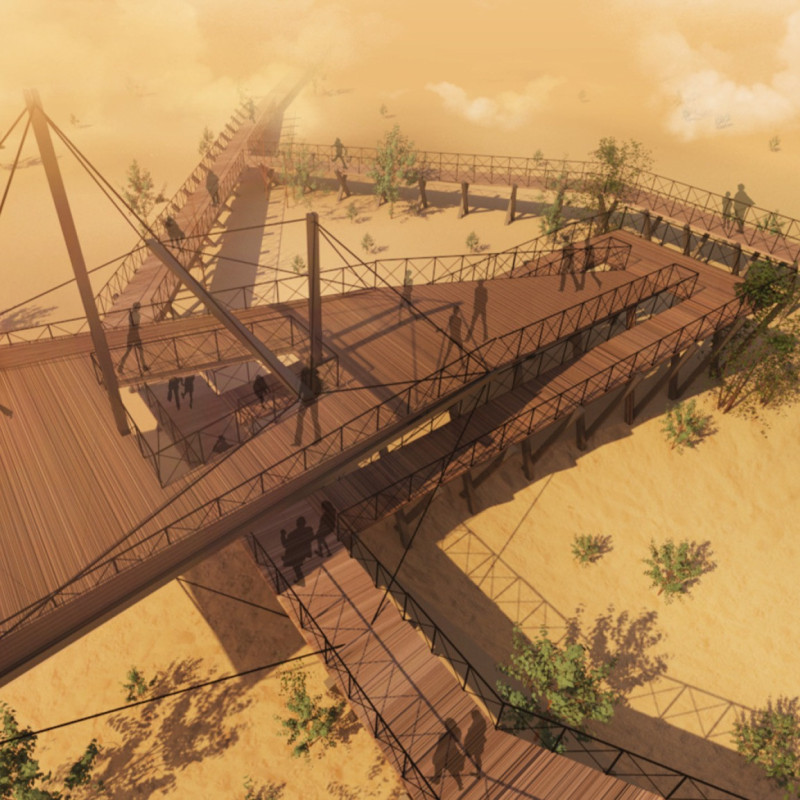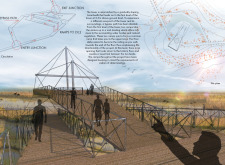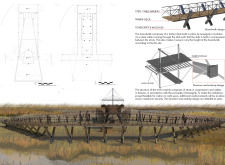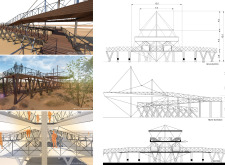5 key facts about this project
The project located in the Al Wathba Wetland Reserve serves to enhance connections between visitors and the natural environment. It exhibits a thoughtful design that focuses on ecological integration and the overall user experience. By utilizing principles of tensegrity, the structure not only supports itself but also blends into its landscape, creating a connection with the surrounding wetlands.
Design Concept
The design aims to create a structure that harmonizes with the local ecosystem while providing a clear functional purpose. Incorporating tensegrity allows the building to maintain a lightweight form that is efficient to construct. This approach brings together aesthetics and function, showcasing an innovative way to interact with nature.
Access and Circulation
Visitors reach the tower along a gently sloping boardwalk that raises them to the first level at 2.5 meters above the ground. This gradual ascent invites an engagement with the surrounding landscape. A bypass path offers different perspectives of both the building and the wetland, encouraging exploration and interaction as one moves through the area.
Structural Elements
The ramps lead to a mid-landing that grants a wide view of nearby water bodies and the native vegetation. These ramps come together into a single flow as they rise higher, supporting ease of movement while maintaining visual coherence. Floor slabs extend outward, acting as railings that ensure safety while providing an unobstructed visual connection throughout the spaces.
Materiality
The materials chosen for the project contribute significantly to its overall design. The boardwalk is made of timber, supported by tensegrity x-modules and steel cables that create a strong yet lightweight structure. These components help adapt to the landscape's variations, accommodating changes in elevation while achieving functional and visual goals.
An opening at the upper level connects different areas within the structure, allowing light to filter in and creating an inviting atmosphere. This design detail enhances the experience for visitors, fostering a sense of unity with both the building and the surrounding environment.






















































